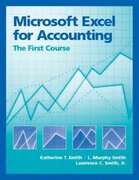Sale n g. ntra BE11.15 (LO 5) C For each of the following situations, indicate if the going concern assumption has Identity been violated. (Write "Yes" or "No" beside each item.) assun a. A company that is going to continue to operate in the foreseeable future reports all of its assets on the balance sheet at the amount expected to be collected if the assets were sold.CHAPTER 11 Financial Reporting Concepts b. A company that is being liquidated reports current assets, non-current assets, current liabil ities, and non-current liabilities on its balance sheet. C. A company that is going to operate in the foreseeable future reports its merchandise inven- tory at cost when the net realizable value is higher than cost. application of the cost BE11.16 (LO 5) C For each of the following independent situations, indicate whether or not the cost int. constraint should be applied. (Write "Yes" or "No" beside each situation.) a. The manager of a privately held company believes the company should be using IFRS and not ASPE even though using IFRS will not provide any additional relevant information to users. b. The CEO of a publicly traded company wants to include a detailed analysis of inventory purchases (not required by IFRS) in the financial statements because one shareholder has requested this information.BE11.1 (LO 1) K Indicate which of the following statements are true or false. (Write "T" or "F" beside Id each item.) c a. The conceptual framework includes recommendations on how to analyze financial statements. b. The conceptual framework identifies the objective of financial reporting. C. The conceptual framework is a temporary framework that provides guidance for accoun tants until standard setters can develop specific rules for every situation. d. The conceptual framework defines assets, liabilities, owner's equity, revenue, and expenses. e. The conceptual framework identifies qualitative characteristics of useful information. f. The conceptual framework provides guidance for responding to new issues and developing new standards.BE11.2 (LO 2) K Here are the basic elements of financial statements that we learned about in earlier Identify e chapters: statemen 1. Assets 2. Liabilities 3. Equity 4. Revenues 5. Expenses Each statement that follows is an important aspect of an element's definition. Match the elements with the definitions. Note: More than one number can be placed in a blank. Each number may be used more than once or not at all. a. Increases in assets or decreases in liabilities resulting from the main profit-generating activ- ities of the business b. Existing debts and obligations from past transactions C. Resources owned by a business d. Goods or services used in the process of earning revenue e. A residual claim on total assets after deducting liabilities The capacity to provide future benefits to the business relate to the qualitative characteristics of useful information










